Prior to about the mid 1980s when zoom lenses became prevalent, if you were in the market for a new camera, chances are it came with a “standard” or “normal” lens with a focal length of 50mm, or somewhere close to that.
In the early days of SLRs, standard lenses were often a bit longer at 58mm, and by the 1970s, many fixed lens cameras had standard lenses a little wider, in the 40 to 42mm range but still, these lenses were considered have a “normal” focal length. Anything wider than the kit lens was a wide angle, and anything longer was a telephoto. It did not matter what brand you were buying, or whether it was an SLR, a rangefinder, or a point and shoot, most cameras had something close to 50mm.
But why? Why did ~50mm become the de-facto standard lens for so many cameras?
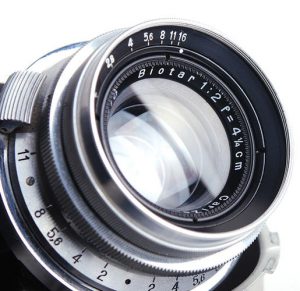
I’ve heard a variety of so-called explanations for this. Some of the more common ones are that 50mm lenses most closely approximate the focal length of the human eye, that 50mm lenses allow for the simplest (and cheapest) lens formulas, or that 50mm is the most flexible focal length that is neither too long nor too wide.
The explanation of a lens that most closely matches that of normal human vision makes sense as if a camera “sees” what we “see”, then that has to be normal, right? But everyone’s eyes are different. Some people have better peripheral vision than others, so what what one person sees as normal, someone else might not. And if humans did have a static focal length to our eyes, why did the normal lens keep changing? 50mm is not the same as 58mm, nor is it 42mm.
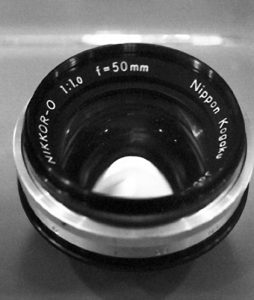
As for complexity of lens design, sure, a whole boat load of 3-element Trioplans and 4-element Tessars were produced over the years as the standard lens on many cameras. I am sure that by the 1960s, Meyer Optik and Carl Zeiss Jena could churn out these simple lenses in a matter of minutes, but how does that explain all the more complex 50mm 6, 7, and 8 element lens designs? Heck, Nippon Kogaku’s Nikkor-N 5cm f/1.1 rangefinder lens has a whopping 9-elements, so that sorta kills any assumption that a 50mm lens was always simpler to make.
Of the three explanations, the flexibility of a normal focal length that’s neither too wide or too long makes the most sense to me, but if you want to know more about the history of these lenses, this week’s Keppler’s Vault from the September 1970 issue of Popular Photography attempts to answer that question.
Author Bob Schwalberg takes a deep dive into the history of the 50mm lens and gets a bit technical throughout making this one a bit more of a challenging read than the typical articles I like to share, but if you really want to know more about normal lenses, it’s worth reading as there is not a single cut and dry answer.
For a simpler explanation, it’s probably no surprise that the reason for the popularity of the 50mm lens has something to do with Oskar Barnack as that was the focal length he chose on the original Leica prototype. All of the original Leicas had fixed 50mm lens, so without any ability to alter the focal length of the camera, Barnack chose a lens that offered both the best compromise of wide and long, while offering a resolution that could be satisfactorily blown up to make prints.
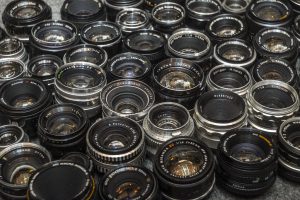
For much of the first half of the 20th century, 50mm lenses were the norm until the late 1950s when the first SLRs were produced with 58mm lenses, which the article says was done both to more easily clear the moving mirror on early reflex cameras, but also to give a closer to 1:1 image on the SLR ground glass. With a slightly longer focal length, SLRs are easier to focus, and early SLRs having darker viewfinders meant that “seeing focus” was a bit more challenging on wider lenses.
Something interesting in this article which I’ve never seen mentioned anywhere was that at one point, there was the thought that perhaps 85mm to 105mm lenses would become the “normal” SLR focal length for that focal length’s ease of achieving a sharp focus and that some photographers preferred those as portrait lenses. While I do not deny the benefits a mild telephoto lens has for portraiture, I am quite glad this idea never gained any traction.
This article was written in 1970 at the very beginning of an increased use of 40 and 42mm standard lenses, so it doesn’t touch upon these too much, but with the popularity of cameras like the Rollei 35 and it’s ultra compact lens design, slightly wider normals would become favorites of simpler rangefinder and scale focus cameras due to increased depth of field, and a more compact size.
As you might image, the question “Why do so many lenses have a 50mm focal length?” doesn’t have a simple cut and dry answer. A combination of many factors contributed, but after reading this article, I feel as though saying “flexibility” is probably the simplest.
All scans used with permission by Marc Bergman, 2021.


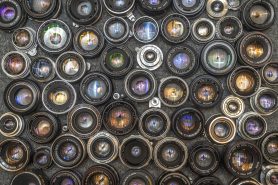
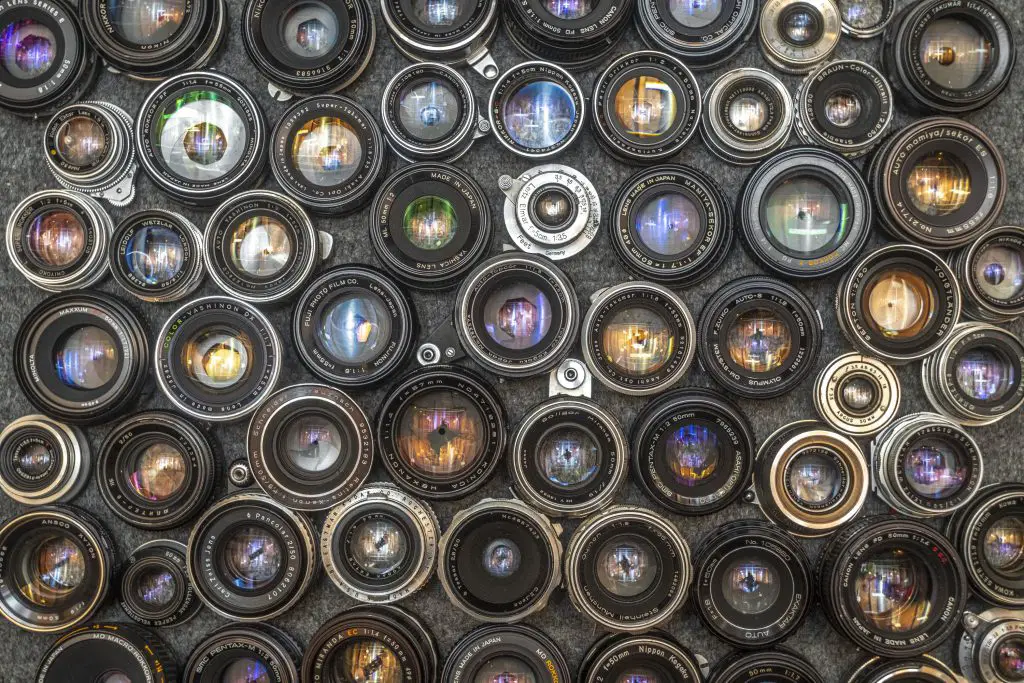
Good post. Years ago I remember reading an article in one of the photo mags that looked at classic art that was created before the camera was invented and before the camera obscura came into use. The purpose was to see with what perspective the artists used. The example they had was of a very old English bridge that still exists. The writer found that the artist used a perspective that a 90mm lens would deliver on 35mm film. I found it interesting since that is one of my favorite focal lengths, much more so that the common 50. BTW, not sure of the magazine but it mayhave been Modern Photography. They tended to ask questions and look into things the other mags didn’t.
That’s really fascinating that those old bridges had a perspective close to a 90mm lens, somewhat lending some validity to the article’s comment that at one time lenses around that focal length were considered to be standard.
You’re also right in that Modern Photography had a knack for creating articles about topics that other magazines didn’t. I do not know exactly how much influence Herbert Keppler had on these articles, but I have to imagine he had some, which is why this whole series is dedicated to him.
I’ve always found reading about the design and advances made over time in photographic lenses, and so I found this a good read. I was also pleased to come across a rare reference to the f2.8 Xenon-C as fitted to my Retina IIc. Cheyenne Morrison published a fascinating article about the development of the Xenon in Casualphotophile, and this generated some discussion about the f2.8 Xenon-C, specifically if being a Xenon was it still of 6-element construction.
I contacted Schneider Optik and was pleased to receive a reply from their Steffen Mahler who confirmed he was unable to find much in the company records but he was able to confirm the lens was, indeed, of 6 element construction. So the comments in the lens article assume more relevance in the section discussing performance of 6-element f2.8 and faster lenses.
My first camera was the 3 lens Retinette 1A in 1961, and I wondered how it was possible for the 4 lens (Tessar) Xenar to improve on its resolution. Then, why even more bits of glass were needed on the Xenon. Years later my conclusion is that the extra glass was needed for improved flatness of field, that is, better resolution on the edge of the frame. However, there was also a downside to more glass; more reflections and more light absorption.
I have seen such excellent detail from 4 glass lenses, that unless they have modern coatings, I prefer their simpler lenses to more glass.
I think that modern coatings are what has made modern telephoto zooms with all that glass, competitive with non-zooms.
I too have the Retina 11c, but I doubt its 6 glass lens will outperform my favourite Retina, the 1B with its 4 glass Xenar. My Retina 11a with its xenon did not distinguish itself against the xenar glass. However, I was not looking for flatness of field, so that needs to be taken into account.
Appreciate your thoughts on my conclusions.
Arnold, I lean closer to your view, rather than accept that just because the f2.8 Xenon C has to be “better” as it has 6 elemements. If one is talking about f2 and faster, the extra elements are needed to correct a number of lens aberrations that become more difficult to control in these fast lenses, and flatness of field is an obvious one, coma is another, being the more visually obvious as both will be visible in B/W or colour images.
I’ve always wondered exactly how the f2.8 Xenon would fare against the best 4-element designs of their day, but without something like my favourite, good weather, slide film, K25, projected to the max size I could achieve, 60×40 inches, so I could really test flatness of field and sharpness across the whole frame, the finer subtleties would be missed. Personally, at the modest f2.8 aperture, I doubt the difference is anything to lose any sleep over. And any difference could easily be down to sample variations.
Terry you bring up an aspect I glossed over, namely the speed of the lens involved. I had often been struck by the fact that f2.8 was such a common speed on Tessar type lenses, and had also noted that faster lenses, such as my Yashica f1.4, had seven elements. Some even more. I suppose that explains the brilliant slide performance of my Retinette, it was only f3.5, so three elements did the job. So yes,the speed of the lens dictates the design limits.
One of the classic texts on photographic optics (might be the book by Arthur Cox) says that perspective that most closely matches that of the unaided human eye is created on film, when the focal length of the lens = the diagonal of the image. Thus 43mm should be “ideal” for a 24x36mm image. The 44mm f3.2 Wollensak lens on the Bolsey B2 is the closest to this “ideal” I’ve seen on a production camera.
I knew there was a good reason I like the Bolsey B2 so much! Perhaps I need to load mine up again and give it another roll!